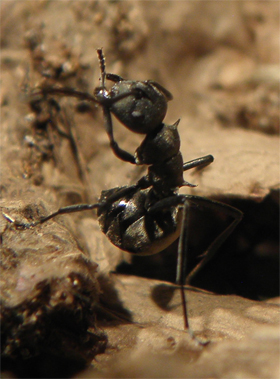 Here we used the generalist entomopathogenic fungus Metarhizium to compare the disease resistance of a species of a weaver ant, Polyrhachis dives, which has lost the metapleural gland, with that of the well-studied leaf-cutting ant Acromyrmex echinatior and two other ant species, Myrmica ruginodis and Formica fusca, all of which have metapleural glands.
Here we used the generalist entomopathogenic fungus Metarhizium to compare the disease resistance of a species of a weaver ant, Polyrhachis dives, which has lost the metapleural gland, with that of the well-studied leaf-cutting ant Acromyrmex echinatior and two other ant species, Myrmica ruginodis and Formica fusca, all of which have metapleural glands.
It appears that the evolutionary loss of the metapleural gland does not result in reduced disease resistance in P. dives weaver ants, and that this at least in part may be due to the ants having antimicrobial venom and high self-grooming rates. The results therefore emphasise the importance of multiple, complementary mechanisms in the disease resistance of ant societies.